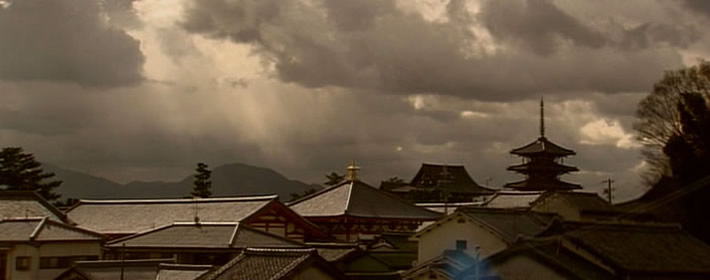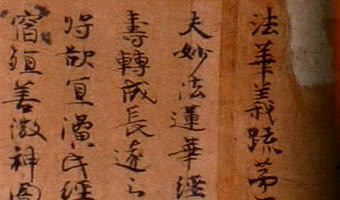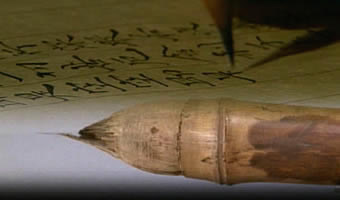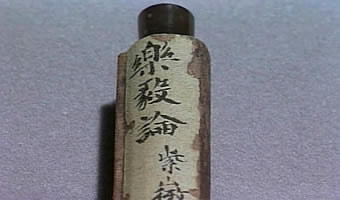Asuka・Nara periodCosmic world of Fude

Shakyou, From Kanji to birth of Manyo-kana ”Jyakutou-fude”
Fude was introduced to Japan along with Chinese characters and Buddhism around the time of Yamato period. A calligraphy called "Hokkegisho" written by Shoutoku-Taishi is reported to be a draft for a commentary on the Sutra, and it gives us a clue to help us understand the atmosphere of the time. Shoutoku-Taishi enthusiastically propagated Buddhism, and the practice of "Shakyou" (Sutra-copying) spread throughout the country.
"Tenpyou-fude" is the oldest fude that still exists in Japan, and it was a fude especially designed for Shakyou. Its Fude head is thick in the middle and narrow at the tip; which makes it possible to copy sutra for a long time with constant regularity. Because the shape of the Fude head resembles a head of sparrow, this fude is called "Jakutou-fude", meaning “sparrow head Fude”.
During Nara period, “Kentoushi"(cultural ambassadors to Tang dynasty) had visited China and brought back superior calligraphy and writing tools, and it contributed to the growing popularity of exchanging poetries among the Japanese nobles. Also, an attempt to write Japanese language using the sound of individual syllables of Chinese characters has started during this period, and it became the birth of Manyo-kana. Manyo-kana established the basis of Hiragana and Katakana, and served as a foundation of original Japanese calligraphic style.
 “Hokkegisho” written by Shoutoku-Taishi
“Hokkegisho” written by Shoutoku-Taishi “Jakutou-fude”
“Jakutou-fude” The empress Komyo “Gakkiron”
The empress Komyo “Gakkiron”